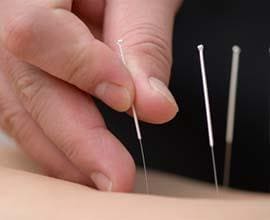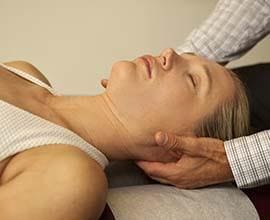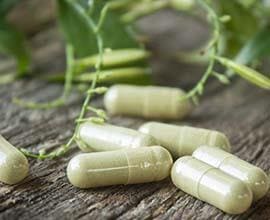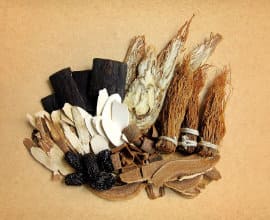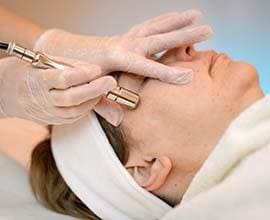Traditional Chinese medicine and psoriasis
What is psoriasis?
Psoriasis is a commonly seen chronic and inflammatory skin condition that results in red, thickened, flaky patches of skin covered with silvery scales. It may also be painful and, or itchy. It can occur on different areas of the body, but is commonly it is seen on the elbows, knees, and scalp. Psoriasis can also affect the nails, nail psoriasis, or the joints known as psoriatic arthritis.
It can affect people of any age. It is most commonly seen in those aged between 11 and 50 and can affect men and women equally. The condition is not infectious, nor is it contagious.
What causes psoriasis?
In biomedicine, the exact cause of psoriasis is not known. However, it is generally accepted that it is a kind of over activity of the immune system and possible inherited factors. These trigger the skin to produce new skin cells at a faster rate than normal. The skin cells are created and then die in the space of a few days, rather than the normal of 28 days. The dead skin cells build up on the surface of the skin, leading to thickening of the skin and shedding as scales.
Aggravating factors may include:
- Infections – some bacterial, fungal or viral infections
- Injuries or trauma to the skin – operations, bites, cuts, abrasions and severe sunburn.
- Certain medicines
- Stress and anxiety
- Alcohol, smoking, other recreational drugs
- Some food additives and preservatives, chemicals in cleaning products, paint, upholstery etc
What are the common types of psoriasis?
There are several types of psoriasis. They may occur singly or together.
- Plaque psoriasis (psoriasis vulgaris) – is the most common form of psoriasis. It is characterised by raised, inflamed, red lesions covered by a silvery white scale which can be itchy and sore. It can appear anywhere on the body but is typically found on the elbows, knees, scalp and lower back.
- Guttate psoriasis – commonly starts in childhood or young adulthood, often following an infection. It is characterised by small, red, individual spots on the skin. It usually appears on the trunk and limbs, with quick onset. May resolve by itself or develop into plaque psoriasis.
- Flexural (inverse) psoriasis – affects areas of the skin in folds or creases, such as elbows, knees the armpits, under the breasts, groin and between the buttocks. Bright-red lesions that are smooth and shiny, and often tender and itchy. It is often aggravated by rubbing and sweating and can be worse in hot and humid weather.
- Scalp psoriasis – occurs in small areas or the entire scalp. Red patches with thick silvery white scales characterise it. It can be intensely itchy. It may cause temporary hair loss.
- Nail psoriasis – affects the nails, causing them to develop tiny dents or pits, become discoloured, loose, even crumble or separate from the nail bed.
- Pustular psoriasis – an uncommon type of psoriasis. It begins with the reddening of the skin followed by the formation of pustules. They can be very painful and itchy.
- Erythrodermic psoriasis – a rare type of psoriasis that affects most of the skin. Periodic and widespread fiery redness and intense itching of the skin, and shedding characterise it.
- Psoriatic Arthritis – a small percentage of people with psoriasis also develop psoriatic arthritis. Commonly there is pain, stiffness and swelling in and around the joints. Joints commonly involved include the last joint in the fingers or toes, wrists, knees, ankles or sacrum.
Are there any biomedical treatments for psoriasis?
There is no cure for psoriasis in biomedicine. Treatments aim to manage the condition by clearing or reducing the patches of psoriasis. Various treatments are available for psoriasis, depending on the type, severity, and area of the skin affected.
Common treatments include:
- Topical treatment - creams, ointments, and moisturising preparations.
- Phototherapy - where the affected skin is exposed to ultraviolet light.
- Medication - to reduce the production of skin cells, or to treat the immune system.
Medications may have side effects. Over time, the skin can become resistant to treatment. Different types of treatment may be used in combination.
Traditional Chinese medicine and psoriasis
Psoriasis is commonly referred to in two different ways in Chinese medicine:
- Song pi xuan 松皮癬 - Pine skin dermatosis.
- Bai bi白疕 - White dagger sore.
The five common factors of psoriasis
According to Chinese medicine, there are five common factors of psoriasis.
1. Hot blood 血熱
- The major factor in psoriasis.
- Erythema or redness of the skin is more pronounced, the stronger the heat.
- It is more active, the stronger the heat.
- Auspitz sign, small bleeding points, often on scratching. The easier to elicit, the stronger the heat.
- Köebner phenomenon, skin lesions appearing on a line, indicates strong heat and fire toxin.
- There is often accompanying heat, thirst, agitation and restlessness
- Factors that aggravate heat include strong emotions and stress, external heat, poor diet and drugs (lithium, anti-malarial drugs, steroids (rebound effect) and physical trauma.
2. Fire toxin 火毒
- Severity is usually most intense with acute, sudden onset than hot blood.
- Often with accompanying symptoms like reoccurring sore throats. Often associated with activity of psoriasis.
- Köebner phenomenon: Indicates fire toxin and strong heat.
- May include thick, yellowish plaques, and, or pustules below the skin surface.
- Widespread involvement of nails.
- Lack of response to simple cooling blood formulas.
3. Wind 風
- Prolific scaling of skin, with pronounced, intense itching.
- Commonly less redness.
- Lesions are mostly on the upper part of body.
4. Dry Blood and Yin 血乾,陰虛
- Lesions are pale or brownish lesion, with thin plaques
- Affected areas are dry, with fissuring of the skin.
- The lesions are slow to develop and change.
- There is rarely Köebner phenomenon, and it is difficult to elicit auspitz sign.
5. Blood Stasis 血瘀
- The lesions and sometimes the surrounding are dark and purplish.
- The lesions are thick and infiltrated, that tend to be stubborn and long term.
- The lesions are often less responsive to other treatment.
Treatment of psoriasis with traditional Chinese medicine
We conduct a skin examination, ask questions and conduct a traditional diagnosis to determine treatment. Following that, regular acupuncture is important. Usually once a week, sometimes more during a flare up, is recommended.
Chinese herbal medicine is essential. The strongest and most flexible way to administer them is to cook up the plant material as tea and to have a cup morning and evening. This way we can write a prescription that addresses the most pressing symptoms and the underlying factors. It is often necessary to continue the herbal medicine for several months. Sometimes we use herbal washes, soaps or ointments as well.
We may also suggest some lifestyle and diet changes as part of treatment.
Our experience is that psoriasis is well treated with traditional Chinese medicine . We also see an improvement in general health. Often as lesions clear there is no resulting scarring or skin discoloration.
If you have any questions, please call Health & Healing Wellness on 07 3857 8887 .
Our Chinese Medicine Practitioners
RELATED ARTICLES
- Can you mix Traditional Chinese Medicine and Western Medicine?
- How does Chinese Medicine work?
- What are the main herbs used in Chinese medicine?
Traditional chinese medicine
- Natural Candida Treatment
- TCM for Fatigue
- Chinese Herbalist
- Chinese Herbs for Fertility
- Herbal Medicine for Headaches
- Chinese Medicine for Stress
- Chinese Medicine for Thrush
- Herbal Weight Loss Programs
- TCM for Psoriasis
- Our Practitioners
Service Areas
Reviews
1 reviews
Search Help Section by Service
Search our information section by a specific service. Simply click the tile below.

